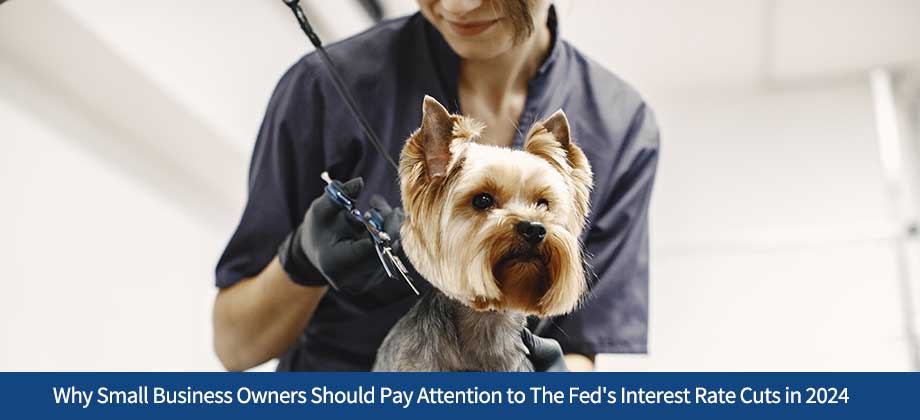Why Small Business Owners Should Pay Attention to The Fed’s Interest Rate Cuts in 2024

The monetary policy decisions made by the Federal Reserve (The Fed) can significantly impact the economy, particularly small businesses. In recent years, The Fed has cut interest rates to stimulate economic growth amidst COVID-19’s uncertainties. The question that currently stands is if and when The Fed will cut interest rates again. Let’s discuss why The Fed will likely cut interest rates in 2024 and what small business owners should do to prepare.
1) Unstable Inflation Rates:
One of the primary reasons The Fed might cut interest rates in 2024 is to address inflation rates that are below the target rate. When inflation is consistently below the target rate, the economy may experience slower economic growth. As a result, The Fed may cut interest rates to encourage borrowing, consumer spending, and investments, which can boost economic growth. These cuts could make funds available to small businesses, enabling them to grow.
Analysts predict that the Fed will cut interest rates four times next year, taking into account the resilience of the US economy. The Fed remains cautious about rate cuts due to the economy’s strength in the coming year. Although there are expectations of a significant slowdown in economic growth, with forecasts projecting GDP expansion of only 0.4% in the first quarter and 0.3% in the second quarter, analysts still believe that the US will avoid a recession, albeit with somewhat elevated risks.
2) Global Economic Downturn:
As we have recently seen, global economic downturns can have catastrophic impacts on small businesses. The Federal Reserve may cut interest rates in 2024 if there is an economic downturn, resulting in global economic instability. By cutting interest rates, The Fed can stimulate economic growth, adding liquidity to the market during hard times. This would keep lending via banks, which could significantly benefit small businesses who require loans to further their growth processes.
Analysts anticipate a significant easing cycle with 100 basis point cuts in 2024, followed by another 100 basis point cuts in 2025, and more in 2026 to reach a steady state rate of 2.75-3%. This implies that the Fed will make four 25-basis-point rate cuts next year. Market sentiment may be overly pessimistic, underestimating the economy’s resilience, which could potentially lead to inflationary pressures. The trajectory of the PCE towards 2.5% inflation would require favorable conditions in the economy, but there is a possibility of GDP upside falling short. Nevertheless, consumer spending is expected to remain supported by high levels of excess savings. The continued resilience of the economy will also exert upward pressure on US bond yields, with the 10-year Treasury expected to average 4.5% by the end of 2024, compared to the current rate of just below 4.3%.
3) Lower Unemployment Rate:
Current employment rates indicate that most businesses are currently struggling to get employees. In the coming years, this trend may change and businesses would find that there are unoccupied positions. To encourage these businesses to occupy these positions, The Fed may cut interest rates, and this would motivate small businesses to borrow more easily, which they can use to hire and train new staff.
5) Lower Lending Rates:
When The Fed cuts interest rates, lenders tend to offer lower rates to encourage borrowing. This makes it a perfect time for small businesses to take advantage of the lower rates to secure loans at a lower cost. Lower rates would make loan repayments more manageable, making it possible for small businesses to reinvest the saved funds into their companies.
Small business owners should pay attention to The Fed’s interest rate cuts in 2024, given how these cuts could benefit their businesses. Lower interest rates would make borrowing more attractive and business loans more affordable, promoting economic growth. Further, an unstable inflation rate, global economic downturns, and a lower unemployment rate are some other reasons The Fed might cut rates. Small businesses must prepare themselves to capitalize on these opportunities to maintain stability, grow their businesses, and create more jobs.

